Strain comparisons and selective breeding for fillet thickness and color
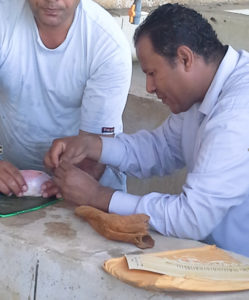
There is an increasing demand for fish in the world due to a growing population, improving economic conditions and higher awareness regarding seafood and health. Fish farming has become the fastest-growing food production system in the world, and aquaculture is playing an important role in alleviating pressure on natural fisheries that are overexploited or, at best, exploited at maximum and unsustainable levels.
Particularly in Africa, intensification of aquaculture can lead to further reduction of the significant nutritional gap and improving production costs while conserving freshwater, which is fast becoming a critical resource in many parts of the continent. In Africa, the natural abundance of tilapia in most of the continent creates hope that they will contribute to enhancing the role of aquaculture in fighting famine and malnutrition in many parts of the continent.
Tilapia’s contributions to poverty alleviation can be enhanced significantly through increasing aquaculture production. Our current breeding program was designed to suit the purposes of Egyptian/African aquaculture, where the main emphasis is on increasing production to alleviate poverty and fight the increasing famine in African communities. As a result, we believe that substantial improvements in aquaculture production in Africa can be achieved through similar selection programs for faster growing fish in the region.
Direct transfer of the improved strains from Asia has not been undertaken because of concern over the potential adverse impact on native germplasm in Africa and unknown effects of gene-environment interactions. The approach being adopted by our current breeding program has been, therefore, to adapt the technology demonstrated in Asia for use in the genetic improvement of tilapia in Africa, test other approaches, and study the potential environmental consequences of genetically modified stocks.
This article – and subsequent, related ones – presents results of our applied, selective breeding program for Nile tilapia (Oreochromis niloticus). It describes is an operational document describing the various work operations in a breeding program where families are produced in batches of three cohorts per year, or alternatively, once a year with genetic links between the batches. A location where families can be produced all year around is an absolute requirement. This breeding program is dynamic, regularly evaluated and updated to reflect experiences and results obtained. The overall objective is to assure an optimal use of all resources allocated to the breeding program to develop genetically superior Nile tilapia, with a major goal to select for fillet color and fillet weight in Nile tilapia in response to consumer preferences.
Benefits of a proper Nile tilapia selection program
There is a large and growing need for intensified, well-structured work on fish genetics in Africa. This is a relatively new are and significant advances of a lasting nature can be accomplished. Model work that was developed in other parts of the world can be used in several African countries with high potential for success, and research topics covering aspects of the uniqueness in the African fish and/or environments can also be developed. Some of the potential benefits of such a program include:
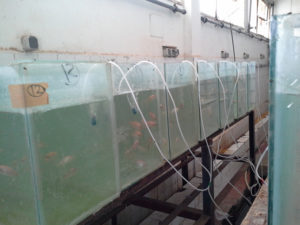
- Improved end products like higher performing lines that can be utilized at different levels depending on the product and the technology used for its development. For example, a faster growing line of Nile tilapia that will be developed from Egyptian stocks is useful only for aquaculture in Egypt. However, if the improved line is completely sterile or if sterility can be introduced into it, then the range of beneficiaries can be extended to include the entire target region.
- Improvement technologies are usually transferable without major modifications for use on the same species and, in many cases, for use on several other species as well. This, however, requires that the necessary expertise exists in the recipient location.
- Identification of possibilities for inclusion of additional improvement techniques through utilization of new technologies and/or developing better ways to assess and quantify the ecological impact of the new technology. Based on such evaluations, an informed decision can be made on the release/escape implications and risks of a given product for commercial use either regionally or sub-regionally.
Strain comparisons and selective breeding
A commercial tilapia breeding program was started in a private farm in Egypt in 2010 with the aim of improving fish growth, production and marketing value. The measured traits of the breeding program were fillet thickness and fillet color. The tilapia fish strains used in this breeding program were Taiwan red, Stirling and Egypt red in addition to Egypt Silver (used as reference strain). Research work was conducted for the selection of fillet thickness. Thickness measured at the “shoulder” of the fish is a good indicator of fillet yield for a fish of a given size. Also, selection was conducted on fillet color and thickness on pure red tilapia and mottled tilapia fish.
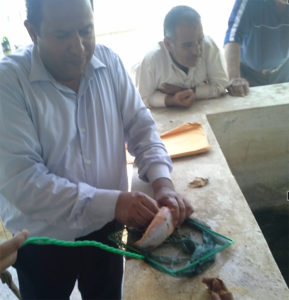
The breeding program work includes various selection criteria (weight at age, growth rate; width at age; fillet yield; and color). The general goals are to clean up the stocks and distribute the offspring in two places. Random sample procedures are used for selection and development of working broodstocks. A batch selection template and a computer program to record and compare actual vs. projected performance in the selection program was started.
To date, approximately 2,000 selected (Generation 2) fish have been transferred into the production broodstock program. The fry produced by these fish (G3) are to be compared with the Egypt Silver reference.
Results of the strain comparison trials
The simplest way to compare the strains was simply to plot growth curves for all the data, as in Fig. 1. However, this straightforward procedure does not account for environmental differences among the growth trials. Egypt silver fish were, therefore, grown together with the test strains as an internal reference to measure environmental quality. The test strains were analyzed relative to the standard strain growing in the same environment, regardless of the environment.
Fig. 2 shows the difference in mean weight for each strain and the reference strain, expressed in grams. Fig. 2 differs from Fig. 1 in that the data have been aggregated by week, that is, after reducing all the individual data to the mean differences between the weights of each strain and the silver strain, expressed as a percentage of the silver strain. It appears that although there is considerable scatter – the two “foreign” strains were larger than either the Egypt reds or the reference fish throughout most of their lives when the data from all environments are considered together. The Egypt reds were smaller than the contemporaneous silver reference fish until age 40 weeks or so, near the end of the experiment.
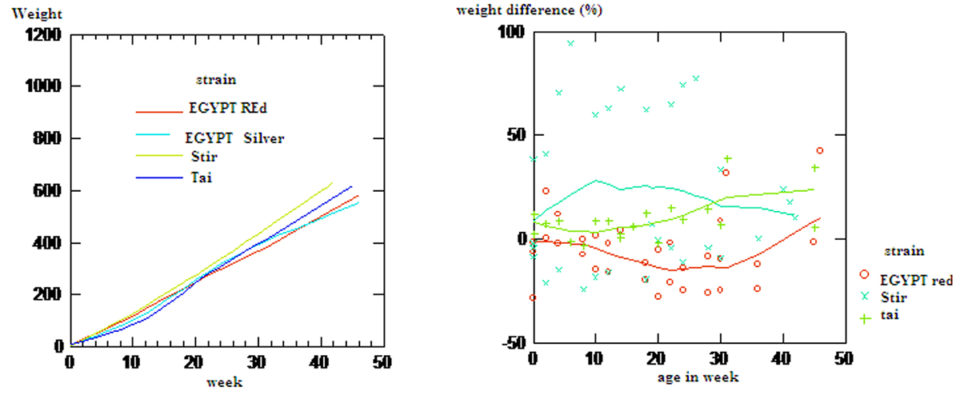
Fig. 2: At right, percentage weight difference between test and reference strains in all environments combined; data are aggregated by week. The horizontal dotted line represents the reference strain (no difference with itself).
The relative weekly growth rates plotted in Fig. 3 also show that when the data from all environments are considered together, the Egypt red strain compares rather poorly to the other strains, even the Egypt Silver reference strain, until late in the growth cycle. However, from an aquacultural point of view, it seems more appropriate to analyze the tank and pond environments separately, as shown in Figs. 4 and 5, respectively.
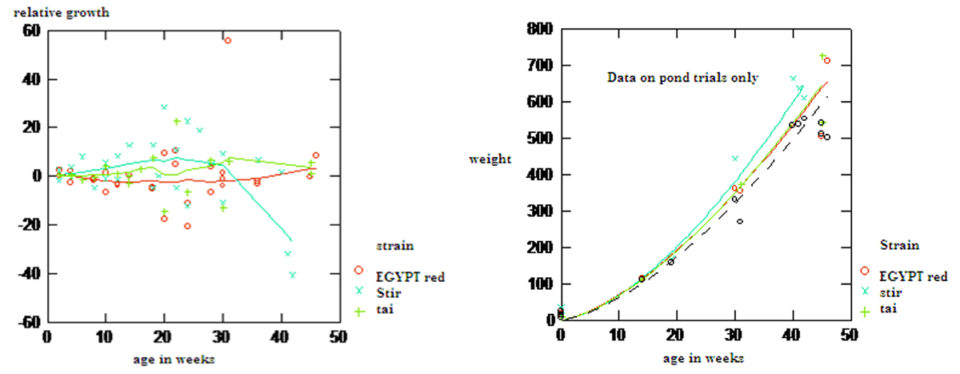
Fig. 4: At right, growth curves for all strains in ponds only; data for the Egypt reference strain are shown in black – a power curve has been fitted through the data.
All the strains performed better than the reference strain in the pond environment (Fig. 4). The Stirling strain performed best of all; at 40 weeks it was about 50 grams heavier, on average, than the Egypt red strain. The Stirling strain was largest in the tank environment too (Fig. 5), but it should be noted that all the Stirling tank data came from a single experiment. The other two test strains were smaller than the reference strains in tanks, for unknown reasons.
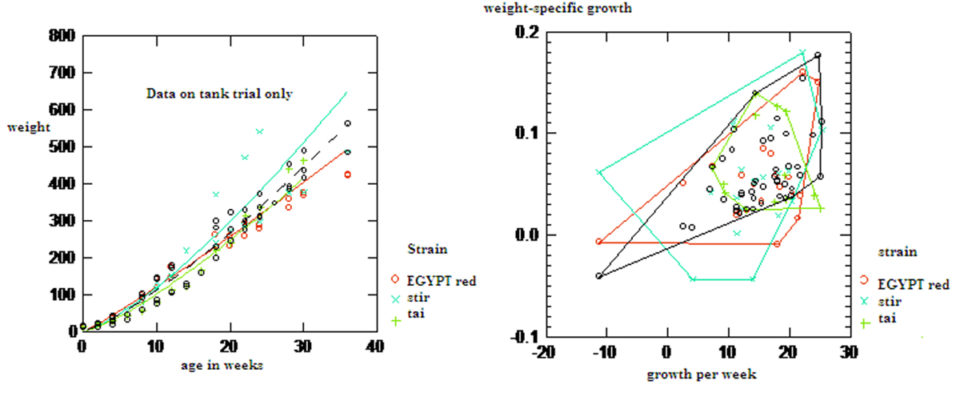
Fig. 6: At right, variations in specific growth rate; data for the Egypt Silver reference strain shown in black – specific growth is the weekly gain in weight divided by mean body weight. Data include only animals that weighed more than 100 grams.
Formally, this can be thought of as an example of genotype-environment interaction (G x E interaction) in which the rank of the strains changes in when they are grown in different environments. The growth rate of the two foreign strains, especially the Stirling strain, varied more than the EGYPT strains (Fig. 6). Among the larger animals these strains achieved both the highest and lowest weight-specific growth rates relative to the reference strain. The variation was most pronounced when overall growth was slow, which suggests that the full genetic potential of the foreign strain may only be realized when conditions are suitable for rapid growth.
Now that you've reached the end of the article ...
… please consider supporting GSA’s mission to advance responsible seafood practices through education, advocacy and third-party assurances. The Advocate aims to document the evolution of responsible seafood practices and share the expansive knowledge of our vast network of contributors.
By becoming a Global Seafood Alliance member, you’re ensuring that all of the pre-competitive work we do through member benefits, resources and events can continue. Individual membership costs just $50 a year.
Not a GSA member? Join us.
Author
-

Dr. Mohamed E. Megahed
National Institute of Oceanography and Fisheries (NIOF)
Gulfs of Suez & Aqaba's Branch
Attaka, Suez 43511, Egypt[109,111,99,46,108,105,97,109,103,64,101,118,111,114,112,109,105,101,103,97,117,113,97]
Tagged With
Related Posts
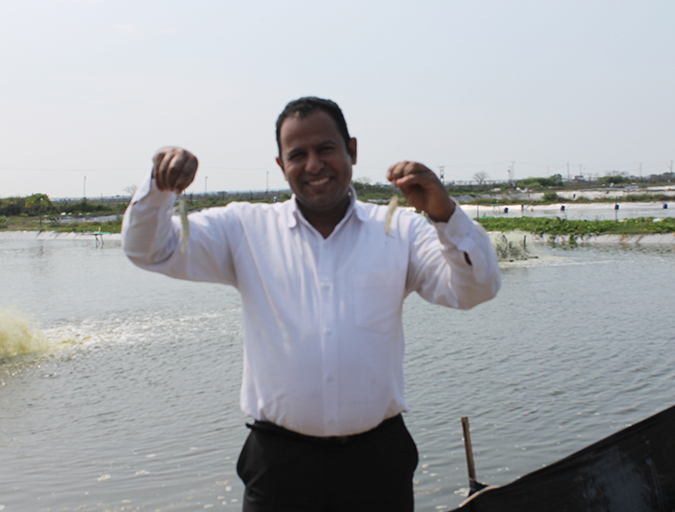
Health & Welfare
Selection for disease resistance in Indian white shrimp
A new breeding program for genetic improvement of Indian white shrimp (Fenneropenaeus indicus) in Egypt was established at a private shrimp farm at AL Dibah Triangle Zone (DTZ) to develop disease-resistant shrimp for the country’s aquaculture industry.
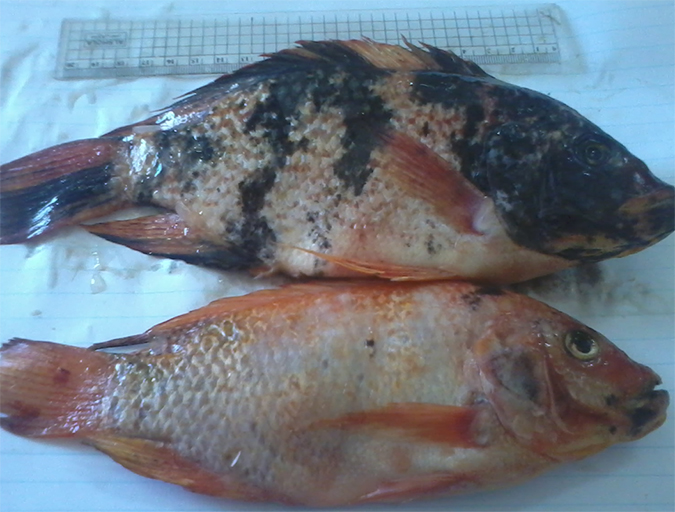
Responsibility
Genetic improvement aids red tilapia growth in Egypt
A new breeding program for genetic improvement of red tilapia was established at the Fish Research Center (FRC), Suez Canal University, in Ismailia, Egypt. It aims to improve the growth rate of the fish and to provide significant benefits to tilapia farmers.
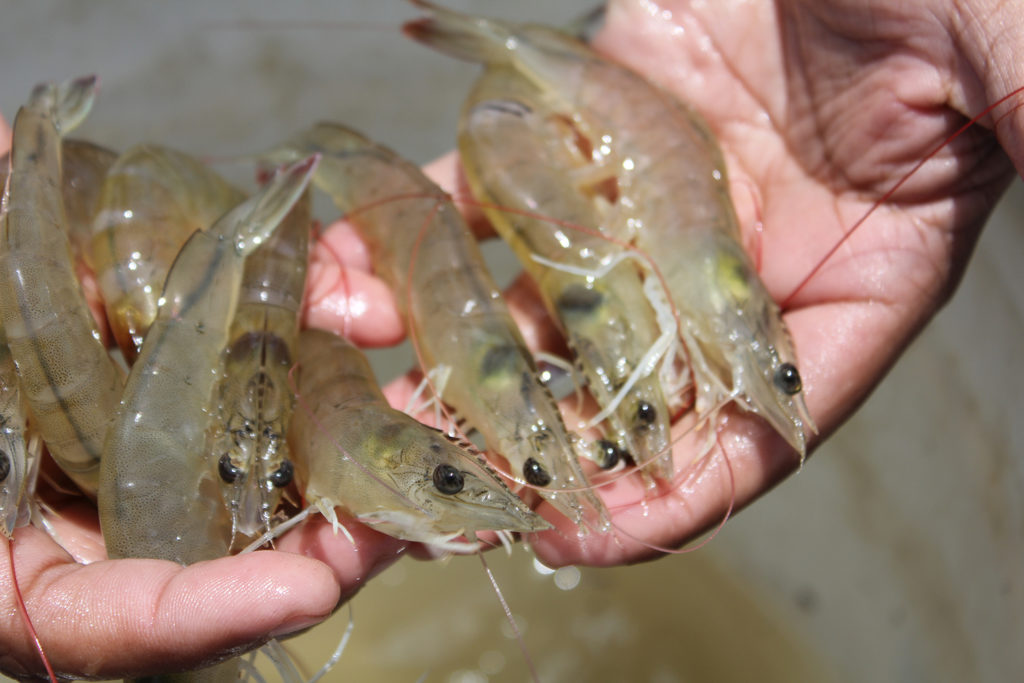
Health & Welfare
Experiences in shrimp genetic improvement in seven countries
In eight genetic improvement programs in seven different countries, growth improvements have been constant in all programs, with annual improvement rates between 5 and 12 percent. Improvements in survival rates are less predictable and less consistent.
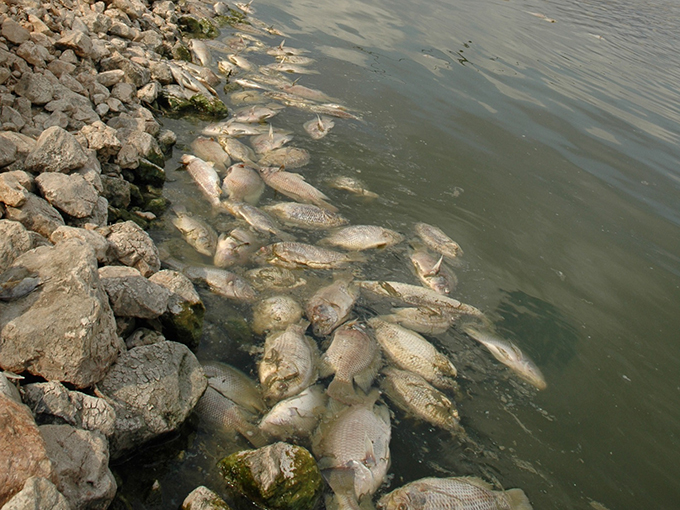
Health & Welfare
Sizing up TiLV and its potential impact on tilapia production
An international research effort has commenced to find a solution for Tilapia Lake Virus (TiLV), a contagion causing high rates of mortality in farmed and wild tilapia stocks in Israel, Colombia, Ecuador, Egypt and Thailand.


